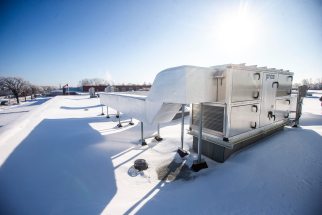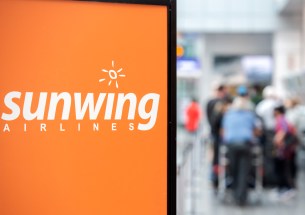Big jump in immigration welcome, accompanied by challenges Nearly 22,000 newcomers arrive in 2022; business leaders, others say massive effort to integrate fleeing Ukrainians should be blueprint for all
Read this article for free:
or
Already have an account? Log in here »
To continue reading, please subscribe:
Monthly Digital Subscription
$0 for the first 4 weeks*
- Enjoy unlimited reading on winnipegfreepress.com
- Read the E-Edition, our digital replica newspaper
- Access News Break, our award-winning app
- Play interactive puzzles
*No charge for 4 weeks then price increases to the regular rate of $19.00 plus GST every four weeks. Offer available to new and qualified returning subscribers only. Cancel any time.
Monthly Digital Subscription
$4.75/week*
- Enjoy unlimited reading on winnipegfreepress.com
- Read the E-Edition, our digital replica newspaper
- Access News Break, our award-winning app
- Play interactive puzzles
*Billed as $19 plus GST every four weeks. Cancel any time.
To continue reading, please subscribe:
Add Free Press access to your Brandon Sun subscription for only an additional
$1 for the first 4 weeks*
*Your next subscription payment will increase by $1.00 and you will be charged $16.99 plus GST for four weeks. After four weeks, your payment will increase to $23.99 plus GST every four weeks.
Read unlimited articles for free today:
or
Already have an account? Log in here »
Hey there, time traveller!
This article was published 05/01/2023 (1074 days ago), so information in it may no longer be current.
Manitoba’s biggest population boost in more a century has come at a time when the province is struggling with a health-care crisis and high inflation.
Despite the challenges, the news is being welcomed by business leaders and others who say the province risks stagnating if it doesn’t draw more people to live and work here.
Federal immigration data shows 21,630 newcomers moved here last year; 15,395 settled in Winnipeg and 1,865 went to Brandon. The rest have found homes in dozens of other, smaller Manitoba communities.
“I think if we collaborate policy-wise, in terms of meeting and discussing the allocation of resources that we have, we’ll make sure that it will work for everyone,” said Immigration Partnership Winnipeg co-ordinator Reuben Garang.
What’s needed is the kind of collaboration that’s helping Ukrainians who arrived in Manitoba last year after fleeing the Russian invasion, Garang said. All levels of government, businesses, the cultural community and newcomer-serving organizations have worked together to provide wraparound supports so new residents can quickly access health care, housing, education and other services.
Top country of citizenship for new Canadian permanent residents in 2022
- India (118,065)
- China (31,805)
- Afghanistan (23,730)
- Nigeria (22,080)
- Philippines (22,065)
- France (14,135)
- Pakistan (11,580)
- Iran (11,105)
- U.S.A. (10,390)
- Syria (8,500)
-Immigration, Refugees and Citizenship Canada
“That models as a way of helping,” said Garang, who was born in South Sudan and arrived in Canada as a refugee nearly 20 years ago.
Manitoba welcomed 1,800 refugees last year: 875 were privately-sponsored, 925 were assisted by the federal government.
If the level of collaboration and resources offered to fleeing Ukrainians in 2022 year was available for all newcomers, it would ensure they got off to a good start and their integration into the community would be quicker and likely more successful, Garang said
“This is something good that we could use as a blueprint and work together as a community,” he said.
Winnipeg Chamber of Commerce president and chief executive officer Loren Remillard said the addition of more than 21,000 new Manitobans is “great news.”
Manitoba needs the kind of population boost from international immigration it saw in 2o22 because it loses more people interprovincially than it gains, he said.
“It’s a good number and it’s a good opportunity for us if managed well,” said Remillard, who agrees that a blueprint is vital for this newcomer boom to succeed.
“I want make sure that it’s a successful integration into our community so that they can contribute fully and meaningfully, as opposed to arrive and instantaneously face the same challenges that many Manitobans are facing, like access to child care and affordable housing.”
JESSICA LEE / WINNIPEG FREE PRESS Immigration Partnership Winnipeg co-ordinator Reuben Garang near his home in Transcona.
In a prepared statement, Immigration Minister Jon Reyes said the province recognizes the importance of providing programs and services that support successful integration, citing $5.1 million it spent on the newcomer community integration support program offered by 15 organizations across Manitoba.
“Our government is committed to mitigating the rising cost of living and exploring other ways to make Manitoba more competitive while improving upon current immigration policies and programs that promote Manitoba as a destination of choice for newcomers,” the statement said.
Last year, Manitoba received a record number of provincial nominee program admissions and has asked Ottawa for more in 2023, Reyes’ statement said.
The vast majority of newcomers to Manitoba are economic immigrants, most of whom came via the provincial nominee program. In 2022, the program was the source of 13,905 new permanent residents, including spouses and dependants.
Manitoba was the first province to set up the program to select and nominate foreign workers, international students and entrepreneurs to help meet labour-market needs, support government priorities and grow the economy.
The federal government still controls how many admissions are allowed and has final say on who can be admitted into Canada.
The 2022 surge of new permanent residents pales compared to the tidal wave of newcomers who arrived in 1912-13. That fiscal year, 43,813 people moved here when the population of Manitoba was just 461,000 — close to a 10 per cent increase, said immigration historian Robert Vineberg.
With a population of almost 1.4 million today, 22,000 immigrants is not a lot, he said.
“In my view, the numbers are manageable and, in fact, desirable,” said the former regional director general for Citizenship and Immigration Canada.
“It seems like it’s a big number but it’s not all that big. And we also, in Manitoba, face the reality that we lose population on interprovincial migration and it’s only because of international immigration that the population grows,” he said.
In the last 20 years, the provincial nominee program has attracted more that 150,000 newcomers.
“Those of us that are old enough can remember how stagnant things were in the ’90s,” said Vineberg. “A lot of credit for the growth of the Manitoba economy is the population is growing, and that’s largely owing to immigration.”
carol.sanders@freepress.mb.ca

Our newsroom depends on a growing audience of readers to power our journalism. If you are not a paid reader, please consider becoming a subscriber.
Our newsroom depends on its audience of readers to power our journalism. Thank you for your support.










